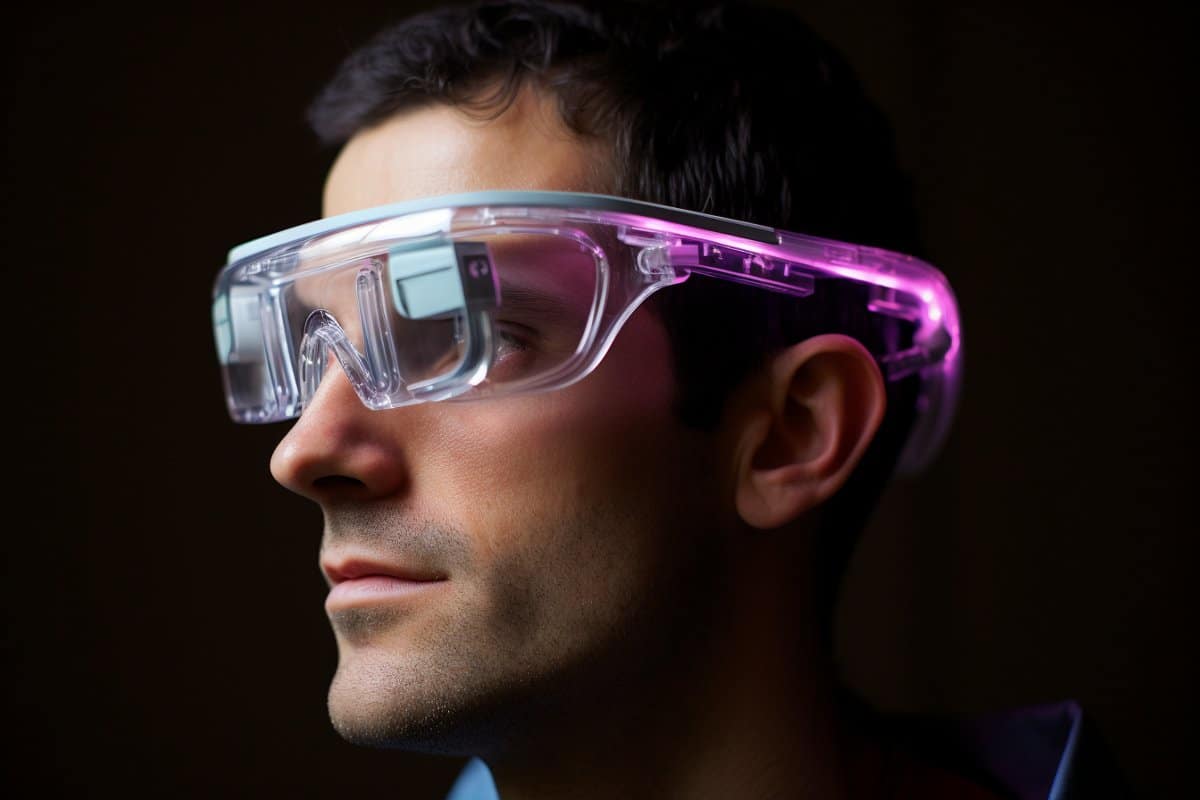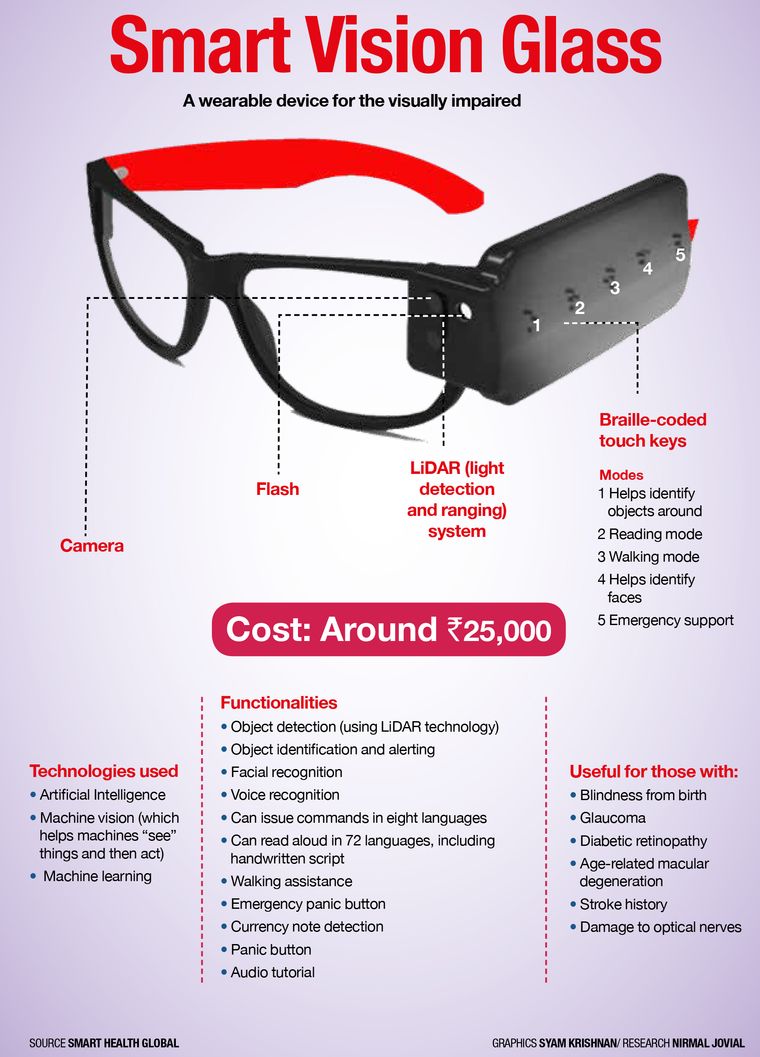Voice-Activated Assistive Devices: Empowering the Visually Impaired Through Innovation
Voice-Activated Assistive Devices: Empowering the Visually Impaired Through Innovation
Blog Article
Ingenious Solutions in Assistive Innovation for Visual Disability
The landscape of assistive innovation for visual problems is evolving rapidly, offering a variety of cutting-edge options that improve ease of access and independence. From innovative mobile phone applications that help with navigating to wearable gadgets developed for real-time assistance, these devices are reshaping the experiences of those with visual problems. Additionally, the integration of clever home innovations and educational sources has the prospective to foster better neighborhood involvement. The ramifications of these innovations raise important questions regarding their access and effectiveness in varied contexts, warranting a better assessment of their broader impact.
Innovations in Smartphone Applications
Recently, developments in mobile phone applications have substantially changed the landscape of assistive modern technology for people with visual disabilities. These applications take advantage of the effective sensing units and abilities of contemporary mobile phones to supply customers with devices that boost freedom and access in their lives.
Remarkable amongst these advancements are applications created for item recognition, which use the mobile phone's video camera to identify items and provide spoken summaries. Such functions equip individuals to navigate their environments extra properly, whether determining products in stores or situating individual valuables at home. Additionally, text-to-speech applications have actually enhanced substantially, allowing users to capture published message with their device's electronic camera and get instant sound comments, thereby promoting analysis and comprehension.
Navigating applications tailored for visually damaged users have actually also emerged, providing acoustic advice and comprehensive area info. These tools offer important assistance for movement, enabling users to traverse unfamiliar spaces with self-confidence. Community-driven applications have fostered social communication and source sharing among people with visual problems, producing a supportive network that improves their high quality of life. In general, smart device applications have become important allies in advertising freedom and availability for people with visual impairments.
Wearable Instruments for Navigating
Wearable gadgets for navigating have arised as a groundbreaking solution for people with visual impairments, providing hands-free aid that enhances wheelchair and positioning. These tools usually use sophisticated technologies, consisting of GPS, ultrasonic sensing units, and artificial intelligence, to supply real-time responses and instructions to users as they navigate their environment.
One significant instance of wearable navigation innovation is wise glasses, which can identify barriers and relay auditory or haptic comments to the wearer, enabling for effective and secure motion in various settings. Various other devices, such as vests and belts equipped with sensing units, can similarly inform customers of their surroundings by giving informs about close-by objects or changes in terrain.
In addition, many wearable gadgets integrate with smart device applications, allowing individuals to tailor their navigation choices and receive customized course recommendations. This customization can significantly boost the individual experience, encouraging individuals to take a trip with better confidence and self-reliance.
As innovation remains to develop, the potential for wearable navigating devices to improve the quality of life for people with visual disabilities remains considerable, leading the way for more accessible and comprehensive settings.
Smart Home Modern Technology Assimilation

In addition, smart devices equipped with responsive user interfaces or acoustic responses supply user-friendly communications that provide specifically to the requirements of those with visual disabilities. As an example, clever refrigerators can announce their contents and expiry dates, while wise ovens can guide individuals through the cooking procedure with audio guidelines.
Home automation systems, such as wise buzzers and protection video cameras, supply comfort by allowing customers to get alerts and gain access to live feeds using their mobile tools, enhancing individual safety and security (AI-powered visual aids). In addition, integration with tablets and smartphones ensures that individuals can handle their home environment from anywhere within their facilities
As smart home modern technology remains to evolve, it holds the possible to change the living experiences of individuals with aesthetic impairments, cultivating independence and improving lifestyle in a significantly connected world.

Educational Equipment and Resources
Access to efficient instructional devices and resources is vital for individuals with aesthetic disabilities, as it empowers them to involve totally in their understanding experiences. Various assistive technologies have actually been established to enhance availability and foster independent learning. Display visitors, as an example, convert message right into speech, enabling trainees to gain access to digital content effortlessly. AI-powered visual aids. Additionally, refreshable braille screens offer tactile comments, making it easier for learners to connect with written material.
In addition, instructional software specifically made for visually damaged customers provides features such as high-contrast settings and adjustable message sizes. These devices fit varied learning styles and guarantee that pupils can tailor their academic experience to their needs.
In addition, accessibility to audio publications and digital collections broadens the series of offered understanding materials, making it possible for pupils to discover subjects extensive without the restrictions enforced by conventional print resources. Joint systems that integrate access features likewise assist in group jobs, guaranteeing that visually damaged students can add meaningfully along with their peers.
Area Support and Involvement
A robust network of neighborhood support and involvement is important for individuals with aesthetic problems, cultivating a comprehensive atmosphere where they can thrive. Area companies, regional advocacy groups, and volunteers play a pivotal function in offering resources, details, and companionship, which are crucial for enhancing the lifestyle for those influenced by aesthetic problems.
Involvement tasks such as workshops, get-togethers, and assistance teams not only promote skill development however additionally promote social communication, lowering sensations of isolation. These initiatives encourage people to share experiences, difficulties, and successes, thereby strengthening area bonds. Furthermore, collaborations with neighborhood services can result in better ease of access in public spaces, further integrating people with visual problems right into the area.
Modern technology also enhances community involvement via online systems that offer virtual assistance groups and sources, permitting people to attach despite geographical barriers. By using both electronic and in-person remedies, areas can create a comprehensive assistance network. Eventually, fostering collaboration among numerous stakeholders-- consisting of households, instructors, and medical care professionals-- makes sure that individuals with visual disabilities receive the holistic support essential to browse day-to-day live effectively and with self-respect.
Final Thought
Cutting-edge solutions in assistive innovation for aesthetic disability considerably enhance the lifestyle for people facing these difficulties. The combination of smart device applications, wearable tools, clever home innovation, and instructional tools fosters higher freedom and availability. In addition, neighborhood support and engagement more Visit Your URL encourage visually impaired individuals, promoting inclusivity and participation in various elements of life. Jointly, these innovations not just change day-to-day experiences yet likewise lead the way for a much more equitable culture.
The landscape of assistive innovation for visual impairment is evolving eye places near me swiftly, offering a variety of ingenious solutions that improve ease of access and independence. Community-driven applications have actually cultivated social communication and resource sharing among people with visual impairments, developing a helpful network that enhances their top quality of life. Generally, mobile phone applications have actually ended up being important allies in promoting freedom and ease of access for people with visual impairments.
Lots of individuals with aesthetic impairments are locating greater eye appointment autonomy via the combination of clever home innovation.Innovative options in assistive technology for aesthetic impairment substantially enhance the top quality of life for individuals dealing with these difficulties.
Report this page